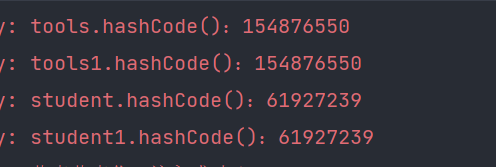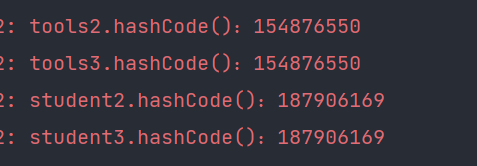前言
Hilt 是Google
最新的依赖注入框架,其是基于Dagger研发,但它不同于Dagger。对于Android开发者来说,Hilt可以说专门为Android
打造,提供了一种将Dagger依赖项注入到Android应用程序的标准方法,而且创建了一组标准的组件和作用域,这些组件会自动集成到Android应用程序的各个生命周期中,以简化开发者的上手难度。
引入Hilt
dependencies {
...
// hilt 依赖导入
implementation "com.google.dagger:hilt-android:2.28-alpha"
annotationProcessor "com.google.dagger:hilt-android-compiler:2.28-alpha"
...
}
buildscript {
...
dependencies {
...
classpath 'com.google.dagger:hilt-android-gradle-plugin:2.28-alpha'// 导入gradle-plugin 字节码插庄
// NOTE: Do not place your application dependencies here; they belong
// in the individual module build.gradle files
}
}
注解
- @HiltAndroidApp: 用于Application ,触发Hilt的代码生成,包括适用于应用程序的基类,可以使用依赖注入,应用程序容器是应用程序的父容器,这意味着其他容器可以访问其提供的依赖项。
- @AndroidEntryPoint: 其会创建一个依赖容器,该容器遵循Android类的生命周期
- @Inject: 用来注入的字段,其类型不能为Private,如果要告诉 Hilt 如何提供相应类型的实例,需要将 @Inject 添加到要注入的类的构造函数中。Hilt有关如何提供不同类型的实例的信息也称为绑定。
Hilt的简单用法
具体逻辑还是根据上一篇的送快递逻辑:上一篇
首先Application用到 @HiltAndroidApp
// hilt 基本上都要 用 Application来辅助
@HiltAndroidApp
public class App extends Application {
}
创建两个需要送的物品
//物品1
public class tools {}
//物品2
public class Student {}
在创建两个它们的包裹
@InstallIn(ApplicationComponent.class)
@Module
public class toolsModule {
@Provides // 暴露对象
@Singleton//上方是ApplicationComponent用这个注解,作用是保持全局单例
public tools getTools(){
return new tools();
}
}
ActivityComponent.class 能注入到Activity,不能注入到Application
ApplicationComponent.class 能注入到Activity, 能注入到Application
@InstallIn(ActivityComponent.class)
@Module
public class StudentModel {
@Provides // 暴露对象
@ActivityScoped//上方是ActivityComponent用这个注解,作用是保持局部单例
public Student getStudent(){
return new Student();
}
}
在Activity1中使用
@Inject
Student student;
@Inject
Student student1;
@Inject
tools tools;
@Inject
tools tools1;
@Override
protected void onCreate(Bundle savedInstanceState) {
...
Log.e(TAG, "tools.hashCode():"+tools.hashCode());
Log.e(TAG, "tools1.hashCode():"+tools1.hashCode());
Log.e(TAG, "student.hashCode():"+student.hashCode());
Log.e(TAG, "student1.hashCode():"+student1.hashCode());
}
打印结果为:

跳转到Activity2中
@AndroidEntryPoint // 我是被注解的 被注入的
public class MainActivity2 extends BaseActivity {
@Inject
Student student2;
@Inject
Student student3;
@Inject
tools tools2;
@Inject
tools tools3;
@Override
protected void onCreate(Bundle savedInstanceState) {
super.onCreate(savedInstanceState);
setContentView(R.layout.activity_main2);
Log.e(TAG, "tools2.hashCode():"+tools2.hashCode());
Log.e(TAG, "tools3.hashCode():"+tools3.hashCode());
Log.e(TAG, "student2.hashCode():"+student2.hashCode());
Log.e(TAG, "student3.hashCode():"+student3.hashCode());
}
}
打印结果为:

会发现tool是全局单例,而student是局部单例
注入绑定接口
先定义一个简单的接口
// 接口
public interface TestInterface {
void method();
}
接口实现类
// 接口的实现类
public class TestClassImpl implements TestInterface {
@Inject
TestClassImpl() {}
@Override
public void method() {
Log.e("MainActivity", "恭喜恭喜你,注入成功√");
}
}
这也得创建一个Module
@InstallIn(ActivityComponent.class)
@Module
public abstract class TestInterfaceModule {
@Binds // 接口 与 实现类 的注入工作
public abstract TestInterface bindTestClass(TestClassImpl testClass);
}
在Activity中使用
@AndroidEntryPoint // 我是被注解的 被注入的
public class MainActivity extends BaseActivity {
@Inject
TestInterface testInterface;
@Override
protected void onCreate(Bundle savedInstanceState) {
...
testInterface.method();
}
}
打印结果:
